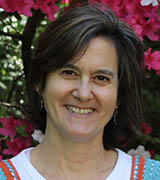The Training Page
Broadening Your Audience Beyond Your Specialty Area
Science communication has never been more important than during the past year. Suddenly, everyone is interested in a category of viruses that scientists have been quietly studying for decades. We all want to know when life will return to normal, and we are searching for answers. Unfortunately, misinformation spreads faster than factual information: People pay attention to simple explanations and sometimes ignore what they do not comprehend. If we want people to trust the science, we have to help them to understand it.
I am a nonscientist who has taught advanced English classes to scientists through the Foundation for Advanced Education in the Sciences since 2017. Many of my students are quite proficient in English, having studied the language in depth, but they want to make better use of their language skills to become more effective communicators. I challenge my students to explain the important aspects of their work more clearly.
Regardless of your native language, it is much easier to speak to people inside your specialty area than to those outside your area of expertise. After all, the people in your field share a common language, full of specialized terms unique to you and your colleagues. But the more you practice speaking to people outside your specialty, the more comfortable you will feel. You’ll be rewarded with interesting conversations while doing your part to educate the public about science.
The first step in getting your audience to understand what you are saying is to get them to listen. Here are some tips that can help when you want to engage in a conversation with someone who knows nothing about what you do:
Tip 1: Tell your audience what excites you about what you do.
Do you like the excitement of discovering something before anyone else? Use an analogy to explain how much we have yet to learn about how our bodies work. You can compare what you do to being an explorer. Make identifying a new protein sound as exciting as discovering a new planet.
Tip 2: Think about your audience’s interests and find a connection.
How does your specialty area connect to something that the average person can understand? When your audience includes people in the general public, you may need to explain words that are part of your vocabulary as a scientist, but are new to them. For example, describing CRISPR-Cas9 gene editing as genetic scissors can provide a helpful visual. If you are a basic scientist, give an example of how your work is important in providing vital information that leads to treatments and cures for diseases.
Tip 3: Leave your audience wanting to hear more.
Give bite-sized pieces of information in the simplest language possible, then pause to let your audience digest it. When your listeners get a taste of what you know and start asking questions, you’ve succeeded in communicating about science.
Tip 4: Tell a Story.
People of all ages love stories. One of my students likes to tell her seven-year-old son stories in which the main characters are antibody superheroes. Wouldn’t you prefer to learn about the immune system through her stories instead of a boring PowerPoint presentation?
My students have told me that speaking to members of the public can be both challenging and rewarding. It’s “an exciting challenge because…you can’t use all the [scientific] jargon…when you talk to a general audience,” said postdoctoral fellow Omar Jose (National Institute of Diabetes and Digestive and Kidney Diseases), who gave a short talk recently about vaccines at a community learning event called Celebrating Scientists. “Whenever I give a presentation, I try to make the message as simple as possible without leaving out any critical information. It takes time to develop this ability, but it pays off because it’s an excellent way to engage the audience.”
Remember, if we want people to trust the science, we need to help them understand it. So the next time someone asks what you do or wants to know about your day, think of it as a communications challenge that you’re ready to take on. And if you are asked to speak at your child’s school for career day, say “Yes!”

Jennifer Kagan, a faculty development specialist with NIH’s Foundation for Advanced Education in the Sciences (FAES), teaches courses in English communication skills and supports faculty in delivering high-quality, graduate-level courses to the NIH community. Before joining FAES in April 2021, she was English Now!’s Director of Program Development and held a joint appointment with FAES, teaching for English Now! Outside of work, she enjoys biking, playing Scrabble, and spending time with her family.
This page was last updated on Monday, February 14, 2022
